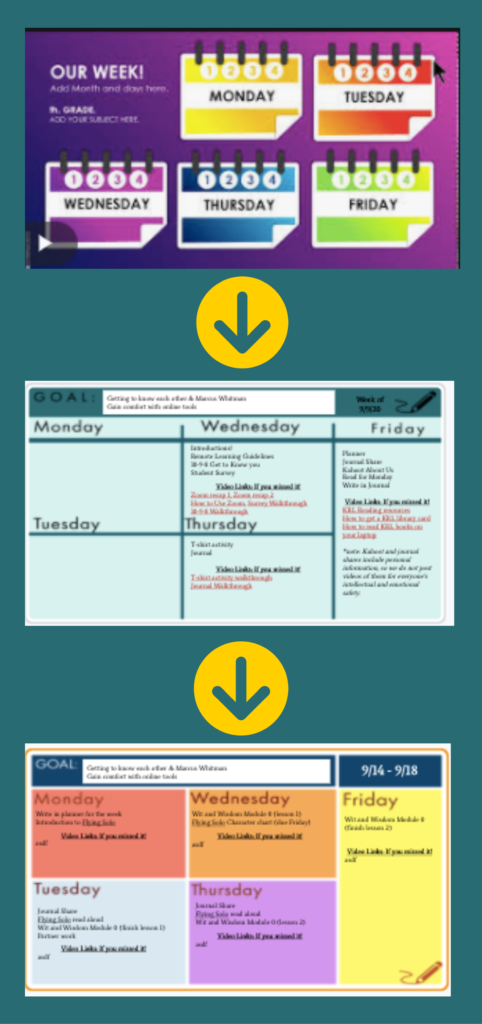In classrooms around the world, hours of thought and care are evident in the classroom systems, rituals and routines. Each minute of instruction reflects the teacher’s expertise and education. However, it is unlikely that many of us have seriously considered communicating the reasoning behind our choices during each of those minutes to non-educators. However, with the onset of COVID 19, communicating those details may be exactly the right thing to do.
Prior to remote learning, there was little reason to share explanations of the minutiae of classroom management decisions with parents because they were not present in our classrooms. However, remote learning has thrust our classrooms into the homes of hundreds of thousands of children, and exposed classroom rituals and routines to many parents and guardians. As a result, aspects of classroom management, teaching, and differentiation that took years for educators to perfect were instantly exposed to families with minimal (if any) explanation.
The myriad of decisions educators make in the process of their work, may seem odd or lack purpose without the attendant background in education theory or child psychology and development. Yet, the onset of remote learning meant educators asked students’ families to support online learning, and exposed them to the intricacies of our classrooms, but did not necessarily provide families with access to accurate information about the purpose of all aspects of our teaching.. It is unsurprising that this caused confusion and frustration.
Howard Reingold observes the benefits of clear, bi-directional communication between citizens and their government, saying “If people are to govern themselves and become citizens instead of subjects, they need to have access to accurate information” (2012, p. 240). Reingold’s words refer to to government policies and actions, but his concept applies to the flow of information from educators and educational institutions to and from the families of our students.
We asked parents to govern themselves, to take on the ownership of their children’s education in full partnership with teachers. But we did not provide them with access to accurate information about the theory and methodology behind our choices as educators. Perhaps increased transparency about the processes we undertake as teachers would empower the adults working with our students at home to engage more fully and confidently in the educational process.
To end, I began a “What Were We Thinking?” page on the family section of our class website. On this page, I post videos breaking down the reasoning and educational theory behind the choices my co-teacher and I make regarding classroom routines and paperwork.

There are many aspects of our classroom that involve significantly more thought than is apparent in their presentation, and this page allows us to share that process. For example, the google slide we use to present the weekly agenda evolved from a 21 slide creation adapted from a slide template site, into a nearly monochromatic single slide before reaching its current simple but colorful layout (Slides Mania, 2020). Each of these transitions was the result of discussion and thought, none of which was apparent in the final slide itself. Knowing why the slide looks the way it does may help parents understand its understated layout.
However, clear communication to families may not be enough to create a sense of engagement and empowerment.
Reingold emphasizes that accurate flow of information must flow both from the government to its citizens and from citizens to government in order for citizens to be fully empowered, and yet historically citizens have had to fight for both access to information and for the opportunity to provide communication to their government (2012, p. 240). As we continue to apply Reingold’s logic to classroom communication, a clear need for establishing systems for feedback and communication from families, and applying these communications into reflective teaching practices emerges. Bi-directional communication allows families to become fully empowered in their children’s education, which I suspect may result in greater engagement combined with reduced frustration.
Rheingold, H. (2012). Net smart : how to thrive online. The MIT Press. https://alliance-primo.hosted.exlibrisgroup.com/permalink/f/rpqmv/CP71164010450001451
Slides Mania (n.d.). Weekly planner for online lessons based on google slides or powerpoint. Slides Mania. Retrieved September 9, 2020, from https://slidesmania.com